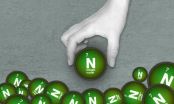Text messages could be useful tool in fight against malaria
2014-10-28
(Press-News.org) New Haven, CT, Oct. 28 2014 – Each year, malaria kills over 600,000 people, more than half of them children. In a study published today in PLOS ONE , researchers with the non-profit Innovations for Poverty Action (IPA) and Harvard University found that simple text message reminders to take malaria medication can help in the fight against the disease by boosting the rates at which patients complete their medication regimen.
One challenge in fighting malaria is that the disease has evolved resistance to many drugs that formerly worked, according to Julia Raifman, a Ph.D. candidate in the Harvard School of Public Health, who co-authored the study. Only one class of drugs, artemisinin-based combination therapies (ACTs) remains effective and available. "When patients don't complete their full medication regimen, diseases can develop resistance to treatment. And with infectious diseases like malaria, drug resistant diseases can spread to others" Raifman said. "Even in the United States, studies show that about half of people don't adhere to their medications—it's easy to forget, or to think you've beaten the disease because you feel better. We've already begun to see resistance to artemisinin in Southeast Asia. It would be catastrophic if that became widespread and there was no effective treatment for the most deadly form of malaria," she added.
The researchers, working with IPA's research staff in Ghana, drew on previous research using SMS reminders in situations where people fail to follow through on intentions, such as saving money, paying back loans, or completing college financial aid forms. The research staff in Ghana recruited more than 1,100 people outside pharmacies and healthcare facilities, who then used their mobile phones to enroll in an automated system. The system randomly assigned half to receive the text message reminders to take their medication at the 12 hour intervals corresponding to when the pills were to be taken. The local staff followed up with the participants several days later at their homes to check how many pills they had taken. Study authors Raifman, Heather Lanthorn, Slawa Rokicki, and Günther Fink found that those who received the texts were significantly more likely to finish the full regimen.
The study also tested whether a short versus longer, more informative message would be more effective and found unexpectedly that the shorter messages had a significant impact, but the longer ones did not. "SMS reminders are a 'nudge,' not a 'shove' " said Aaron Dibner-Dunlap, an Innovations for Poverty Action researcher who studies text message reminders. "They can help people follow through on something they originally intended to do, but human nature is tricky and the science is still young. We're optimistic because the technology has become so widespread and inexpensive to administer, that for programs like this one that work, there's huge potential for helping people at very low cost."
INFORMATION:
More information about the study is available at http://bit.ly/MalariaSMS
Additional facts:
Malaria is one of the leading causes of death for children under five worldwide.
Of malaria deaths, 92 percent occurred in Sub-Saharan Africa, where Plasmodium falciparum, the most virulent form of the malaria parasite, is most common.
This study took place in and around Tamale, the capital of Ghana's Northern Region.
Ghana was a pilot country for the Global Fund's Affordable Medicines Facility – malaria (AMFm), which aimed to expand access to ACTs by highly subsidizing their cost. National health insurance allows members to receive the medications free of charge.
Contact:
Jeff Mosenkis, Innovations for Poverty Action (jmosenkis@poverty-action.org 203.672.9552 )
Or
Julia RG Raifman, Harvard School of Public Health (jrgoldbe@hsph.harvard.edu)
About Innovations for Poverty Action:
Innovations for Poverty Action (IPA) discovers and promotes effective solutions to global poverty problems. IPA designs, rigorously evaluates, and refines these solutions and their applications together with decisionmakers to ensure that the evidence created is used to improve opportunities for the world's poor. In the ten years since its founding IPA has worked with over 250 leading academics to conduct over 400 evaluations in 51 countries.
More information is available at http://www.poverty-action.org .
ELSE PRESS RELEASES FROM THIS DATE:
2014-10-28
This news release is available in German.
In addition to their song, songbirds also have an extensive repertoire of calls. While the species-specific song must be learned as a young bird, most calls are, as in the case of all other birds, innate. Researchers at the Max Planck Institute in Seewiesen have now discovered that in zebra finches the song control system in the brain is also active during simple communication calls. This relationship between unlearned calls and an area of the brain responsible for learned vocalisations is important for understanding the ...
2014-10-28
JUPITER, FL, October 28, 2014 – Scientists from the Florida campus of The Scripps Research Institute (TSRI) have uncovered a major contributor to Huntington's disease, a devastating progressive neurological condition that produces involuntary movements, emotional disturbance and cognitive impairment.
Using an animal model of Huntington's disease, the new study shows that signaling by a specific protein can trigger onset of the disease and lead to exacerbation of symptoms. These findings, published in the October 28, 2014 issue of the journal Science Signaling, offer ...
2014-10-28
A connection between inflammation and cancer has been recognized for over a hundred years. This connection is particularly evident in colon carcinogenesis, because patients with IBD have a higher incidence of colon cancer than the general population. There is increasing evidence that inflammation contributes to the earliest stages of carcinogenesis, namely in the process of cell transformation, where the cell acquires many aspects of cancer characteristics. The observation that IBD and colon cancer incidence rise as nations industrialize suggests that changes in diet and ...
2014-10-28
PROVIDENCE, R.I. [Brown University] — New research by physicists from Brown University puts the profound strangeness of quantum mechanics in a nutshell — or, more accurately, in a helium bubble.
Experiments led by Humphrey Maris, professor of physics at Brown, suggest that the quantum state of an electron — the electron's wave function — can be shattered into pieces and those pieces can be trapped in tiny bubbles of liquid helium. To be clear, the researchers are not saying that the electron can be broken apart. Electrons are elementary particles, ...
2014-10-28
Politics can have unintentional evolutionary consequences that may cause hastily issued policies to cascade into global, multigenerational problems, according to political scientists.
"Most western democracies look at policies as if they are bandages, we fix what we can and then move on," said Pete Hatemi, associate professor of political science, Penn State. "But we need to consider generational policies so that we can fix what we can now, but also be prepared for what comes next."
The researchers said that there is an interaction between political and cultural forces ...
2014-10-28
WASHINGTON, D.C., October 28, 2014 – In the future, computers may be capable of talking to us during meetings just like a remote teleconference participant. But to help move this science-fiction-sounding goal a step closer to reality, it's first necessary to teach computers to recognize not only the words we use but also the myriad meanings, subtleties and attitudes they can convey.
During the 168th Meeting of the Acoustical Society of America (ASA), to be held October 27-31, 2014, at the Indianapolis Marriott Downtown Hotel, Valerie Freeman, a Ph.D. candidate in ...
2014-10-28
One of the tragic realities of cancer is that the drugs used to treat it are highly toxic and their effectiveness varies unpredictably from patient to patient. However, a new "tumor-in-a-dish" technology is poised to change this reality by rapidly assessing how effective specific anti-cancer cocktails will be on an individual's cancer before chemotherapy begins.
A team of biomedical engineers at Vanderbilt University headed by Assistant Professor Melissa Skala has developed the technique, which uses fluorescence imaging to monitor the response of three-dimensional chunks ...
2014-10-28
Tropical Cyclone Nilofar developed an eye on Oct. 28 that seemed to stare at NASA's Terra satellite as it passed overhead in space. Warnings are already in effect from the India Meteorological Department as Nilofar is forecast to make landfall in northwestern India.
On Oct. 28 at 06:50 UTC (2:50 a.m. EDT) the MODIS instrument aboard Terra captured a visible image of Tropical Cyclone Nilofar after it developed an eye while moving north in the Arabian Sea. The 12 nautical mile (13.8 miles/22.2 km) wide eye was surrounded by powerful thunderstorms and bands of thunderstorms ...
2014-10-28
DEET has been the gold standard of insect repellents for more than six decades, and now researchers led by a University of California, Davis, scientist have discovered the exact odorant receptor that repels them.
They also have identified a plant defensive compound that might mimic DEET, a discovery that could pave the way for better and more affordable insect repellents. Findings from the study appear in the journal Proceedings of the National Academy of Sciences.
More than 200 million people worldwide use DEET, developed by scientists at the U.S. Department of Agriculture ...
2014-10-28
Nitrogen is an essential component of all living systems, playing important roles in everything from proteins and nucleic acids to vitamins. It is the most abundant element in Earth's atmosphere and is literally all around us, but in its gaseous state, N2,, it is inert and useless to most organisms. Something has to convert, or "fix," that nitrogen into a metabolically usable form, such as ammonia. Until about 100 years ago when an industrial-scale technique called the Haber-Bosch process was developed, bacteria were almost wholly responsible for all nitrogen fixation on ...
LAST 30 PRESS RELEASES:
[Press-News.org] Text messages could be useful tool in fight against malaria




